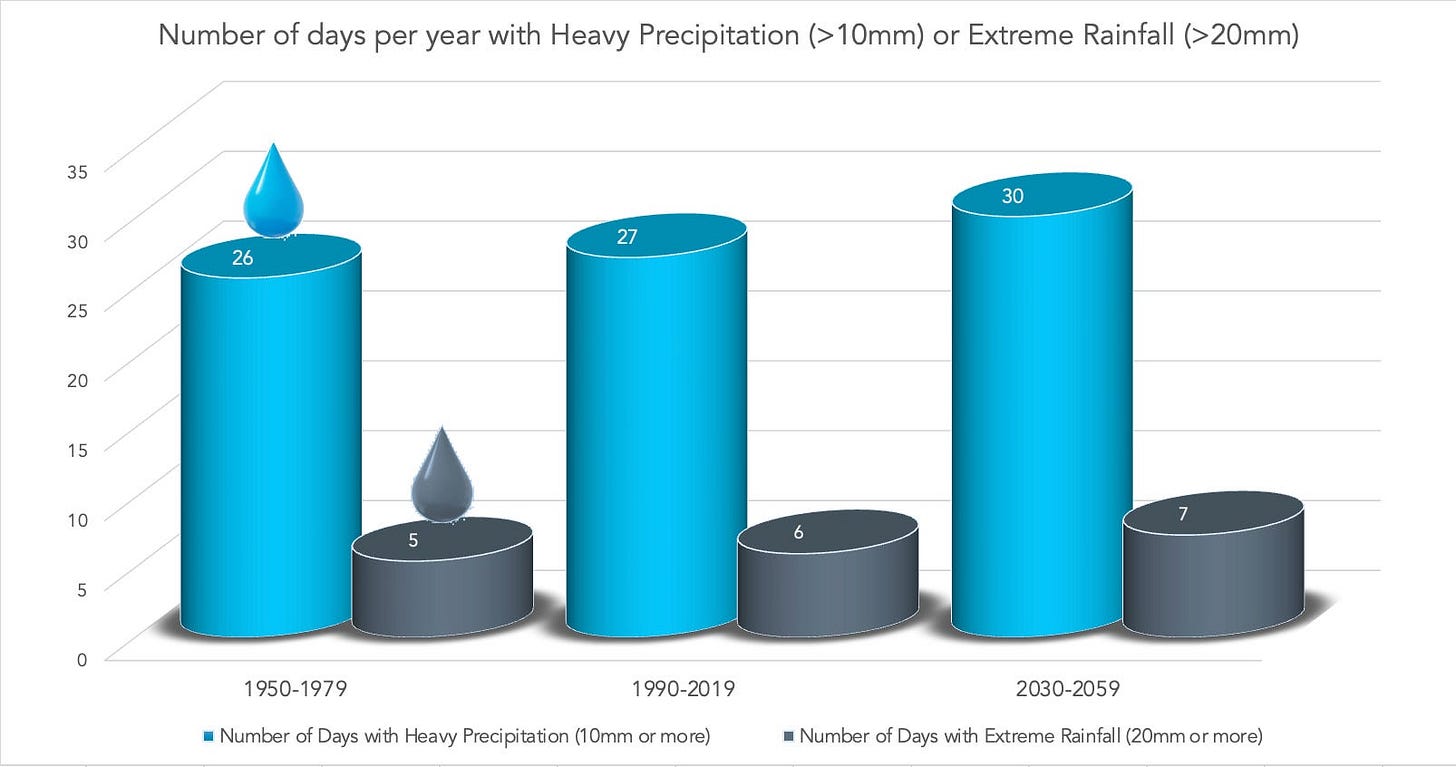It’s been raining heavily lately here. That in itself is a climate story, but a rather well known one. As the world warms the atmosphere is getting wetter, and some parts of the world, like the Gatineau Hills, are getting more precipitation, and especially more heavy rain events…
Nevertheless, despite expecting more heavy rain events in the future, I was actually surprised to find a section of my road washed out today. This is a part of the road that does not typically have trouble with heavy rain, so it doesn’t seem quite right to link the road wash out to climate change impacts, directly. But there is indeed a climate connection to this story… just perhaps not in the way many will expect...
The reason this section of the road doesn’t usually have drainage issues is that there is a culvert underneath the road. Usually when the rains are heavy, it just filters through and flows into the creek on the other side of the road. No problem. But, as you can see in the photo above, the culvert appears to be blocked, and so the water is flowing over the road, washing it away. But why? And what's the climate connection?
In the background of the photo above you will notice what looks like a lot of cut down trees under the power line. That's because Hydro Quebec came by a few weeks ago as part of a massive province-wide project to make the electricity grid more resilient to climate change! Just about all the major roads in the region are being cleared as part of a vegetation management effort, to reduce the likelihood of power outages from falling branches tied to extreme weather events.
The crew that came by earlier this summer made quite a mess to be honest. They cut down every tree within a given radius of the power line, and chipped it all in place. You can see in the photo above mountains of wood chips on the hill. Pretty aesthetically unpleasant, but at least our power line is more “climate resilient” now!
However, then came the heavy rains. That itself is partly variable by year, but as mentioned above we are expecting to get more precipitation in the future thanks to climate change. Here’s a graph I made a while back showing projected increases in extreme rainfall events:
Ironically, it was the mess that HydroQuebec left which led to the culvert being blocked. The rains pushed all those wood chips in front of it! And, all the newly deceased trees now make it so there are no large tree root systems absorbing water. In turn, the soil on that hill is eroding, turning to mud, and contributing to clogging the culvert!
So, there you have it... a "Climate Adaptation" project which has helped make our electricity infrastructure more resilient, but has inadvertently damaged our road infrastructure. Oops!







